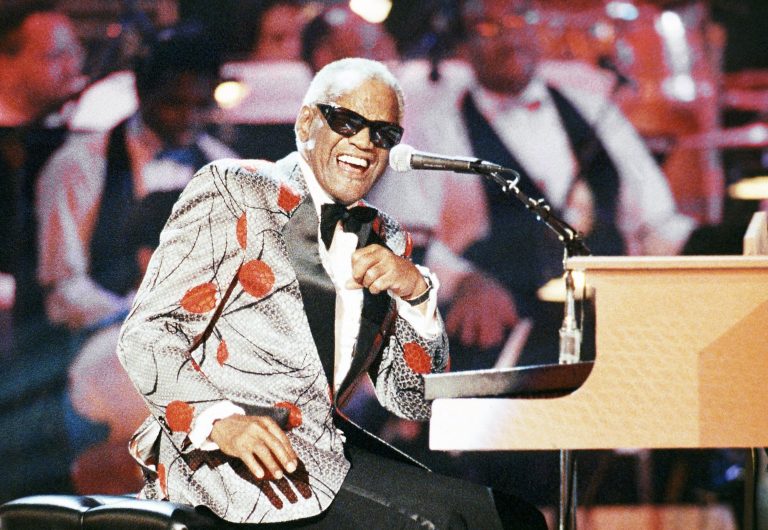Introduction
Ray Charles, born Ray Charles Robinson, was more than a music icon—he was a symbol of perseverance, genius, and groundbreaking artistry. Widely known as The Genius or The Genius of Soul, Ray Charles is considered one of the most influential musicians of the 20th century. Blending gospel, jazz, blues, and rhythm & blues into a distinct musical language, he not only broke boundaries in music but also in race, ability, and class. At the time of his death in 2004, Ray Charles had an estimated net value of $ 75 million, a will for their lifetime commitment to music excellence and entrepreneurship insights.
Ray Charles’ Net Worth
Estimated Net Worth: $75 Million (at time of death)
Ray Charles’s financial legacy is as impactful as his musical one. From humble beginnings in the segregated South to building a multi-million-dollar empire, Ray Charles exemplified what it meant to turn talent into generational wealth.
He generated income through:
- Music sales – chart-topping hits across multiple genres
- Live performances – Known for their electrification phase appearance
- Film and TV licensing – his music has been featured in countless movies and commercials
- Business ventures – including his label, Tangerine Records
Additionally, Ray Charles was philanthropically generous, contributing to music education and blindness research. Despite the wealth, he remained deeply rooted in his community and values.
Biography Table: Ray Charles at a Glance
| Full Name | Ray Charles Robinson |
| Stage Name | Ray Charles |
| Date of Birth | September 23, 1930 |
| Place of Birth | Albany, Georgia, USA |
| Date of Death | June 10, 2004 |
| Age at Death | 73 Years Old |
| Profession | Singer, Songwriter, Pianist |
| Genres | Soul, R&B, Jazz, Blues, Country |
| Nationality | American |
| Education | Florida School for the Deaf and Blind |
| Net Worth | $75 Million |
| Disabilities | Blind from the age of 7 |
| Philanthropy | Music education, civil rights causes |
Early Life and Tragedy
Born in poverty in Albany, Georgia, Ray Charles experienced a turbulent childhood marked by disadvantages and adversity. He started losing his vision at the age of 5 due to glaucoma, and until the age of 7, he was completely blind. That same year, he endured the death of his beloved younger brother, George, in a drowning accident.
Despite this trauma, his mother, Aretha Robinson, instilled in him strength and self-sufficiency. She enrolled Ray in the Florida School for the Deaf and the Blind, where he learned to read braille and master the piano, clarinet, and saxophone.
Career Beginnings and Breakthrough
After his mother died when he was 14, Ray left school and began performing across the South. By the age of 16, he moved to Seattle and formed a band. Influenced by artists like Nat King Cole, Charles eventually developed his soulful blend of gospel and blues, pioneering what became known as soul music.
His big break came with hits like:
- “I Got a Woman” (1954)
- “What’d I Say” (1959)
- “Georgia on My Mind” (1960) – which became the official state song of Georgia
These hits launched him into international fame, earning him a reputation as a genre-defying innovator.
Musical Legacy and Influence
Ray Charles recorded over 60 albums, won 17 Grammy Awards, and received countless other praises, including:
- Kennedy Center Honors
- National Medal of Arts
- Rock and Roll Hall of Fame inductee (1986)
He influenced artists across all genres—from Stevie Wonder and Aretha Franklin to Billy Joel and Kanye West.
Business Ventures and Independence
One of the first African-American artists seeking artistic and financial control, Charles interacted with ABC Records in 1960 on a groundbreaking deal, granting him:
- Ownership of his master recordings
- Higher royalties
- Creative freedom
He later founded Tangerine Records, promoting artists and releasing his work, solidifying his role not just as an artist but also as a savvy entrepreneur.
Personal Life
Ray Charles had 12 children with 10 different women and was married twice. Though his personal life was complex, he remained dedicated to his children and left behind a carefully structured estate plan to manage his legacy.
He also struggled with heroin addiction, which he overcame in the 1960s after multiple arrests. His battle and recovery added depth to his image and inspired many.
Philanthropy and Final Years
Ray Charles was deeply committed to philanthropy. He contributed millions through his Ray Charles Foundation, supporting music scholarships for underprivileged youth and scientific research for the blind.
He continued performing and recording until his final days. Charles passed away from liver disease on June 10, 2004, leaving behind not just a catalog of music but a life story filled with resilience, brilliance, and generosity.
FAQs About Ray Charles
When he died, what was the net worth of Ray Charles?
At the time of his death in 2004, Ray Charles had an estimated total asset of $ 75 million.
How did Ray Charles become blind?
He started losing his vision due to glaucoma and became completely blind by the age of 7.
What genre is Ray Charles known for?
He is credited with pioneering soul music, blending gospel, jazz, blues, and R&B.
Did Ray Charles win any Grammy Awards?
Yes, Ray Charles won 17 Grammy Awards, including a Lifetime Achievement Award.
Was Ray Charles involved in philanthropy?
Yes, Ray Charles won 17 Grammy Awards, including the Lifetime Achievement Award.
Conclusion
Ray Charles’s life story is one of passion, perseverance, and purpose. From a blind boy in rural Georgia to a musical legend with a $75 million legacy, he showed the world that talent, determination, and heart could overcome any obstacle. His influence continues to shape music today, and his contributions to civil rights, business, and philanthropy remain enduring reminders of The Genius of Soul.


